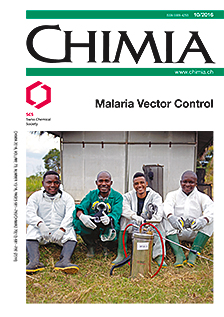Vector Control in Developing Countries: Challenges and Solutions
DOI:
https://doi.org/10.2533/chimia.2016.709Keywords:
Energy-autonomy, Mosquito traps, Photovoltaics, Vector controlAbstract
Undoubtedly, reducing vector populations or their interactions with hosts below a critical level is a practical and proven method of disease control. Introduction of insecticide-treated bed nets has significantly reduced malaria in some parts of the world. However, for many reasons, implementation of such strategies is challenging and the protection offered by particular products limited: bed nets are only effective during sleep. Other methods have been launched, but low customer appeal, high cost, low specificity, and lack of sustainability and effectiveness are often reasons for failure. The proposed solution to these problems should also consider safety and environmental impact and be forward-thinking for continued functioning in a rapidly changing local environment. To this end, a chemical system has been identified that could be used to make an autonomous trap with chemo-attractant system.Downloads
Published
2016-10-26
Issue
Section
Scientific Articles
License
Copyright (c) 2016 Swiss Chemical Society

This work is licensed under a Creative Commons Attribution-NonCommercial 4.0 International License.
How to Cite
[1]
Chimia 2016, 70, 709, DOI: 10.2533/chimia.2016.709.







